Choosing the right bike for your child is essential for safety and comfort. This guide helps Australian parents select bikes based on height‚ inseam‚ and age‚ ensuring proper fit and fun riding experiences.
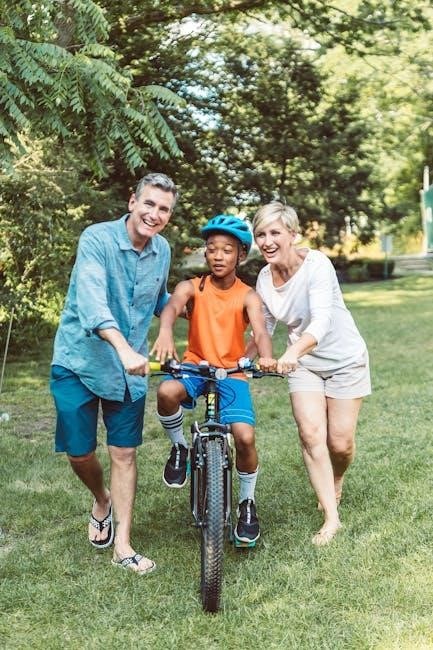
How to Measure Your Child for the Right Bike Size
To ensure a proper fit‚ measure your child’s height‚ inseam‚ and consider their age; These measurements help determine the ideal bike size‚ ensuring safety and comfort while riding.
Importance of Measuring Your Child’s Height
Measuring your child’s height is crucial for selecting the right bike size. It ensures the bike is proportional to their body‚ allowing them to maintain balance and control. A bike that is too large or small can be unsafe and uncomfortable. Height helps determine the appropriate wheel size and frame size‚ ensuring your child can touch the ground and reach the handlebars comfortably. This measurement is more reliable than age alone‚ as children grow at different rates. By prioritizing height‚ you ensure a safe and enjoyable riding experience for your child. Always use a reliable height chart or guide for accurate measurements.
How to Measure Your Child’s Inseam
Measuring your child’s inseam is a simple process that ensures the best bike fit. Stand your child against a wall with their feet slightly apart. Place a hardcover book or ruler between their thighs‚ flush against the wall. This mimics the bike seat height. Mark the wall where the book or ruler touches‚ then measure this distance. This measurement helps determine the appropriate bike size and wheel diameter. For accuracy‚ ensure your child wears the shoes they’ll use while riding. Inseam measurements are crucial for balancing and pedaling comfort‚ making it a key factor in selecting the right bike for your child. Always refer to a sizing chart for precise recommendations based on this measurement.
Using Age as a Secondary Measurement
Age can serve as a helpful secondary guide when selecting a bike for your child‚ though it’s less precise than height or inseam measurements. Generally‚ 2-4 year olds suit 12-inch bikes‚ 4-6 year olds fit 16-inch models‚ and 5-9 year olds are comfortable on 20-inch bikes. Older kids often graduate to 24-inch or 26-inch bikes. However‚ it’s important to remember that children grow at different rates‚ and some may need a larger or smaller bike than their age suggests. Always combine age with height and inseam measurements for the best fit. This ensures the bike is safe‚ comfortable‚ and easy to handle‚ promoting confidence and enjoyment for your child as they learn to ride.
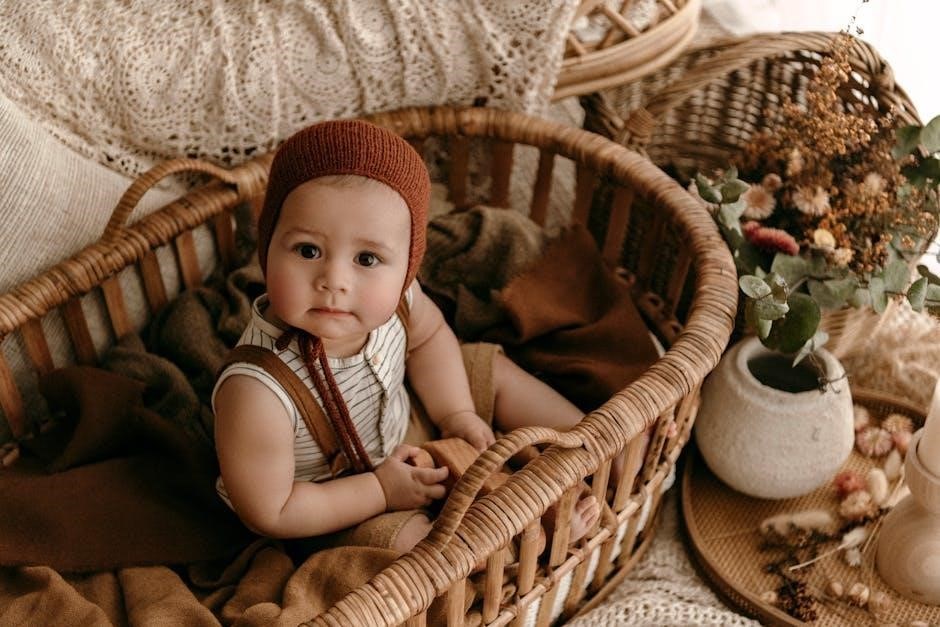
Understanding Kids Bike Types
Kids’ bikes vary to suit different ages and skills‚ from balance bikes for toddlers to standard push bikes with training wheels and intermediate or advanced models for older riders‚ ensuring safety and fun.
Balance Bikes for Toddlers
Balance bikes are designed for toddlers‚ typically aged 2-4 years‚ with 12-inch wheels. These bikes have no pedals‚ allowing children to focus on balancing and steering by pushing with their feet. They are lightweight‚ making them easy for young kids to maneuver. Balance bikes are an excellent starting point‚ helping toddlers build confidence and coordination before transitioning to pedal bikes. Many models feature adjustable seats to accommodate growth‚ ensuring the bike remains suitable as the child develops. Safety is a priority‚ with durable frames and stable designs. Parents often opt for these bikes to teach fundamental cycling skills in a fun and risk-free environment.
Standard Push Bikes with Training Wheels
Standard push bikes with training wheels are ideal for children transitioning from balance bikes‚ typically aged 3-6 years. These bikes usually feature 12-inch or 16-inch wheels‚ providing stability and support. Training wheels are designed to prevent tipping‚ giving kids confidence as they learn to pedal and steer. Many models include adjustable seats to accommodate growing children and durable frames for long-lasting use. Brake systems‚ often lever-operated‚ help young riders learn to stop safely. These bikes are a great intermediate step‚ allowing children to develop pedaling skills before progressing to independent riding. They are widely available in Australia and often come with vibrant designs to appeal to kids‚ making the learning process fun and engaging.
Intermediate and Advanced Bikes for Older Kids
Intermediate and advanced bikes cater to older kids who have mastered basic cycling skills‚ offering enhanced performance and durability. These bikes typically feature 20-inch or 24-inch wheels‚ suitable for children aged 6-12 years. Designs vary‚ with options for mountain bikes‚ BMX bikes‚ and road bikes‚ each tailored to specific riding styles. Mountain bikes include sturdy frames and suspension systems for off-road adventures‚ while BMX bikes are built for tricks and racing. Advanced models often come with higher-quality components‚ such as alloy wheels and improved braking systems‚ ensuring better control and safety. Australian brands offer a range of these bikes‚ emphasizing safety standards and adaptability to different terrains‚ making them ideal for kids seeking more challenging rides and adventures;

Wheel Sizes and Age Recommendations
In Australia‚ kids’ bikes are sized by wheel diameter‚ with 12-inch bikes for 2-4 years‚ 16-inch for 4-6 years‚ 20-inch for 5-9 years‚ and larger sizes for older kids.
12-Inch Bikes for 2-4 Years
12-inch bikes are ideal for children aged 2-4 years‚ with a height range of 78-94 cm. These bikes are designed for young riders‚ often featuring balance or training wheels. They are lightweight and easy to maneuver‚ helping toddlers build confidence and coordination. The 12-inch wheel size ensures stability‚ making it easier for little ones to balance and control the bike. Many models come with adjustable seats and handlebars to accommodate growing children. Additionally‚ some 12-inch bikes are balance bikes‚ which lack pedals‚ focusing on teaching equilibrium before transitioning to pedal bikes. This size is perfect for introducing cycling to toddlers‚ ensuring a safe and enjoyable learning experience.
16-Inch Bikes for 4-6 Years
16-inch bikes are designed for children aged 4-6 years‚ typically measuring 99-115 cm in height. These bikes are a step up from 12-inch models‚ offering more stability and independence. Many 16-inch bikes come with training wheels‚ which can be removed as the child gains confidence. They feature lightweight frames and adjustable seats to accommodate growth. This size is ideal for transitioning from balance bikes or smaller models‚ providing a smooth learning curve. The 16-inch wheel size ensures better traction and control‚ making it suitable for riding on various surfaces like parks and sidewalks. Additionally‚ some models offer the option to convert into standard push bikes‚ making them a versatile choice for growing riders.
20-Inch Bikes for 5-9 Years
20-inch bikes are suitable for children aged 5-9 years‚ typically measuring 110-130 cm in height. These bikes cater to intermediate riders who have outgrown smaller models. They often feature durable frames and reliable braking systems‚ making them ideal for neighborhood rides or light off-road adventures. Some 20-inch bikes are designed as mountain bikes‚ offering additional features like suspension for better comfort on rough terrain. This size is a great transition point before moving to larger‚ more advanced bikes. Parents should ensure the bike fits properly‚ with the child able to stand over it with a slight bend in the knee. Adjustable components allow the bike to grow with the child‚ providing long-term value and enjoyment.
24-Inch and 26-Inch Bikes for Older Kids
24-inch and 26-inch bikes are designed for older children‚ typically aged 8-12 years‚ with heights ranging from 125-150 cm for 24-inch bikes and over 145 cm for 26-inch models. These bikes are ideal for advanced riders who need more stability and control. They often feature lightweight frames‚ suspension systems‚ and higher gear ratios‚ making them suitable for both on-road and off-road adventures. The larger wheel size provides better speed and efficiency‚ while adjustable handlebars and seatposts ensure a comfortable fit as the child grows. These bikes are a great transition to more adult-sized models‚ offering durability and performance for confident riders;

Key Features to Look for in Kids Bikes
Key features include reliable brakes‚ lightweight frames‚ and durable construction. Adjustable seat heights and handlebars ensure a perfect fit as your child grows‚ promoting comfort and confidence.
Safety Features
Safety features in kids’ bikes are crucial for protecting your child while riding. A sturdy frame and reliable brakes are essential to ensure control and stability. Many bikes come with padded seats and handlebar grips for added comfort and impact absorption. Reflectors and bright colors enhance visibility‚ making it easier for drivers to spot your child. Some bikes also include additional safety elements like knee and elbow pads‚ which are highly recommended for extra protection‚ especially during learning stages. Australian Standards-approved helmets are a must-have accessory‚ providing critical head protection. Ensuring these safety features are in place helps build confidence in your child’s ability to ride safely and enjoyably.
Comfort and Adjustability
Comfort and adjustability are key factors in ensuring your child enjoys their riding experience. Bikes with adjustable seat heights and handlebars allow the bike to grow with your child‚ providing years of use. A lightweight frame makes it easier for kids to handle and maneuver the bike‚ reducing fatigue. Padded seats and ergonomic grips enhance comfort during long rides. Many bikes also feature quick-release mechanisms for easy adjustments‚ ensuring the perfect fit as your child grows. Proper fit not only improves comfort but also safety‚ as it allows better control over the bike. Look for bikes with these features to ensure your child stays comfortable and confident while riding. Adjustability ensures the bike remains suitable as your child develops‚ making it a practical and enjoyable investment for years to come.
Additional Accessories
Additional accessories can enhance your child’s biking experience‚ ensuring safety and convenience. Helmets are essential‚ with Australian Standards-approved models providing optimal protection. Knee and elbow pads offer extra safety for active riders. Reflectors and bright decals improve visibility‚ keeping your child safe in low-light conditions. Baskets or storage compartments are practical for carrying small items. Water bottle holders encourage hydration during rides. Some bikes come with detachable training wheels‚ aiding young riders in building confidence. Accessories like bells and kickstands add functionality. While these extras may not be included with every bike‚ they are worth considering to tailor the bike to your child’s needs and preferences‚ ensuring a safe‚ enjoyable‚ and personalized riding experience.
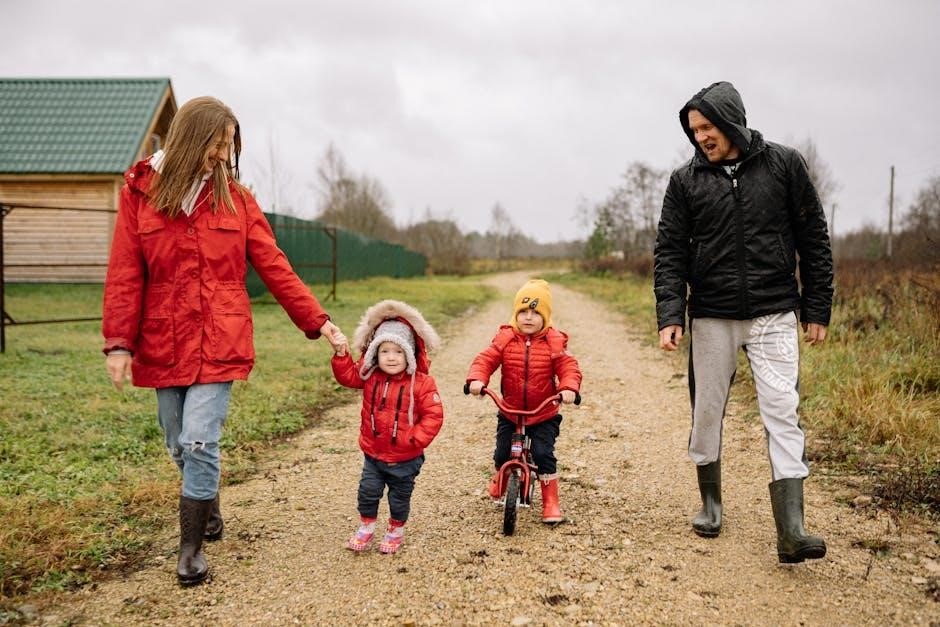
Importance of Safety Gear
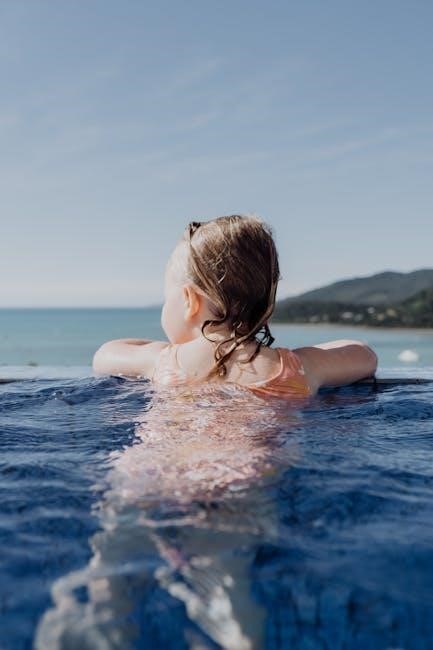
Importance of Safety Gear
Safety gear is crucial for protecting your child while cycling. Helmets‚ knee pads‚ and reflective accessories ensure visibility and reduce injury risks‚ making them essential for every ride.
Why Your Child Needs a Helmet
A helmet is the most critical safety gear for your child while cycling. It protects their head from injuries in case of a fall or collision. Australian Standards-approved helmets are mandatory and provide reliable protection. A proper fit is essential‚ so ensure your child tries it on before purchasing. A helmet reduces the risk of serious head injuries‚ making it a non-negotiable accessory for every ride. Never compromise on quality or fit to ensure your child’s safety while riding. Helmets are not just a precaution; they are a lifesaver. Always choose a helmet that meets Australian safety standards to guarantee maximum protection for your child.
Knee and Elbow Pads
Knee and elbow pads are essential protective gear for children while cycling‚ providing extra safety during falls or scrapes. They help prevent bruises and abrasions‚ giving parents peace of mind. Pads should fit snugly but comfortably‚ allowing freedom of movement. Durable‚ high-quality materials ensure long-lasting protection. While not mandatory like helmets‚ they are highly recommended‚ especially for young or inexperienced riders. Even confident cyclists benefit from the added safety of knee and elbow pads. They are a practical investment to ensure your child’s safety while enjoying their bike. Always choose pads that are breathable and designed for cycling to keep your child comfortable and protected during rides.
Reflectors and Visibility
Reflectors and visibility are crucial for your child’s safety while cycling. Bikes should be equipped with front‚ rear‚ and pedal reflectors to ensure they are visible to drivers‚ especially in low-light conditions. Additional accessories like reflective strips on pedals or wheels can enhance visibility further. Bright or fluorescent clothing for your child also plays a significant role in making them more noticeable to others on the road. Ensuring your child’s bike meets Australian safety standards for reflectors is a simple yet effective way to improve their visibility and reduce accident risks. Visibility is key to ensuring your child’s safety while riding‚ making it an essential consideration when preparing their bike for the road.
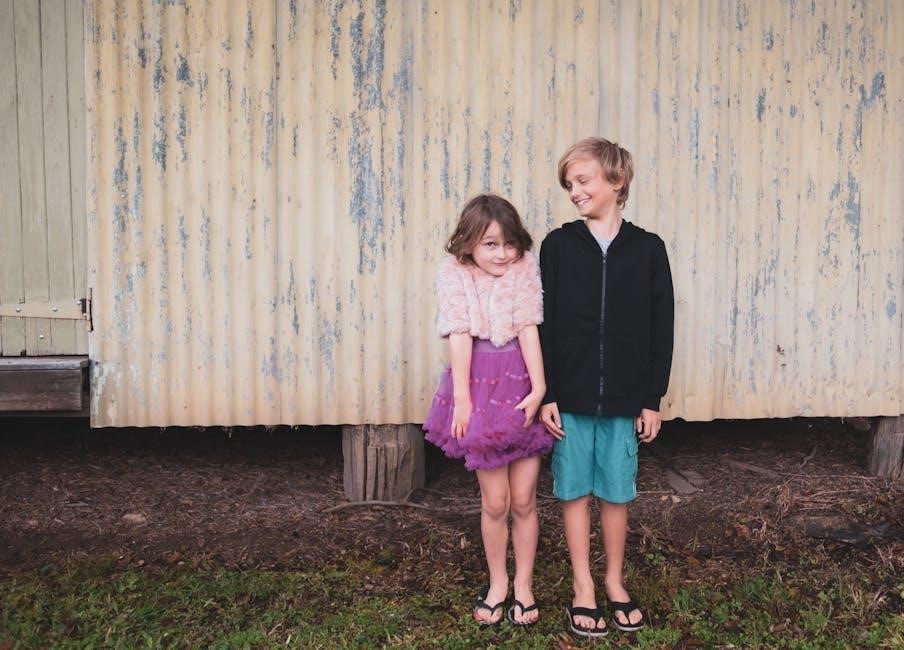
Final Tips for Choosing the Right Bike
When selecting the perfect bike for your child‚ prioritize a test ride to ensure comfort and ease of handling. Always check that they can stand over the bike with both feet flat on the ground. Consider adjustable features to accommodate growth and ensure the bike is lightweight for better control. Safety gear‚ such as a helmet and knee pads‚ should be non-negotiable. Reflective accessories and visibility aids are also essential for safety. Finally‚ read reviews and seek recommendations to ensure the bike meets Australian safety standards and suits your child’s skill level and riding style. These steps will help you make an informed decision and provide your child with a safe‚ enjoyable cycling experience;
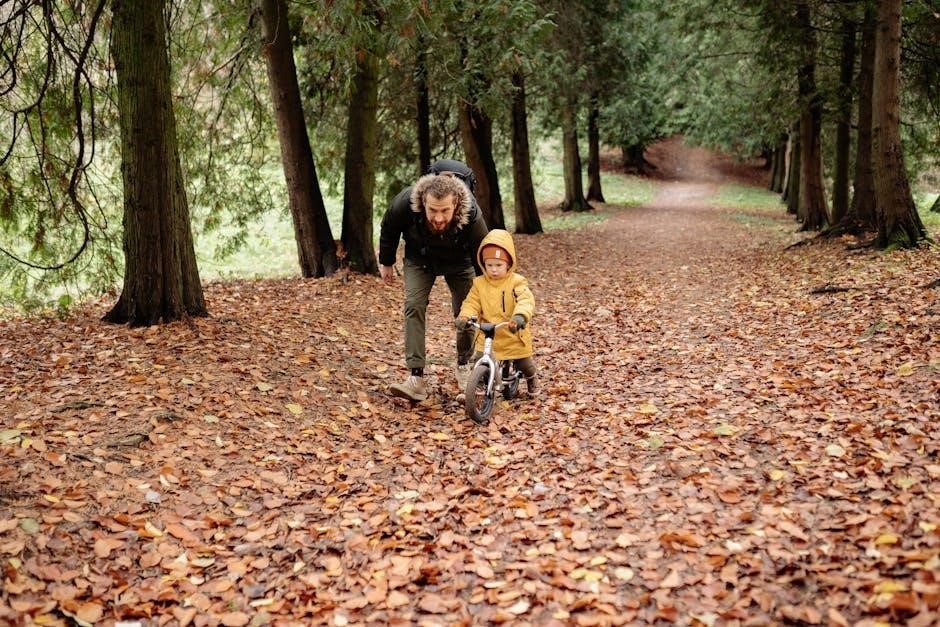
Leave a Reply